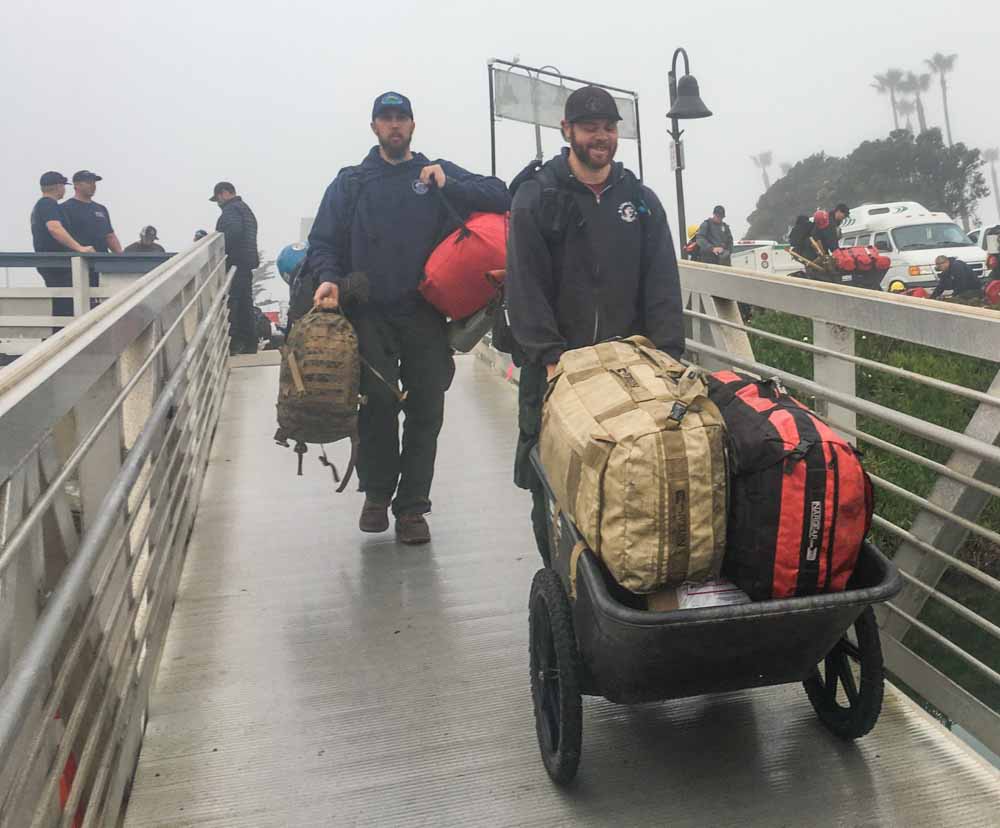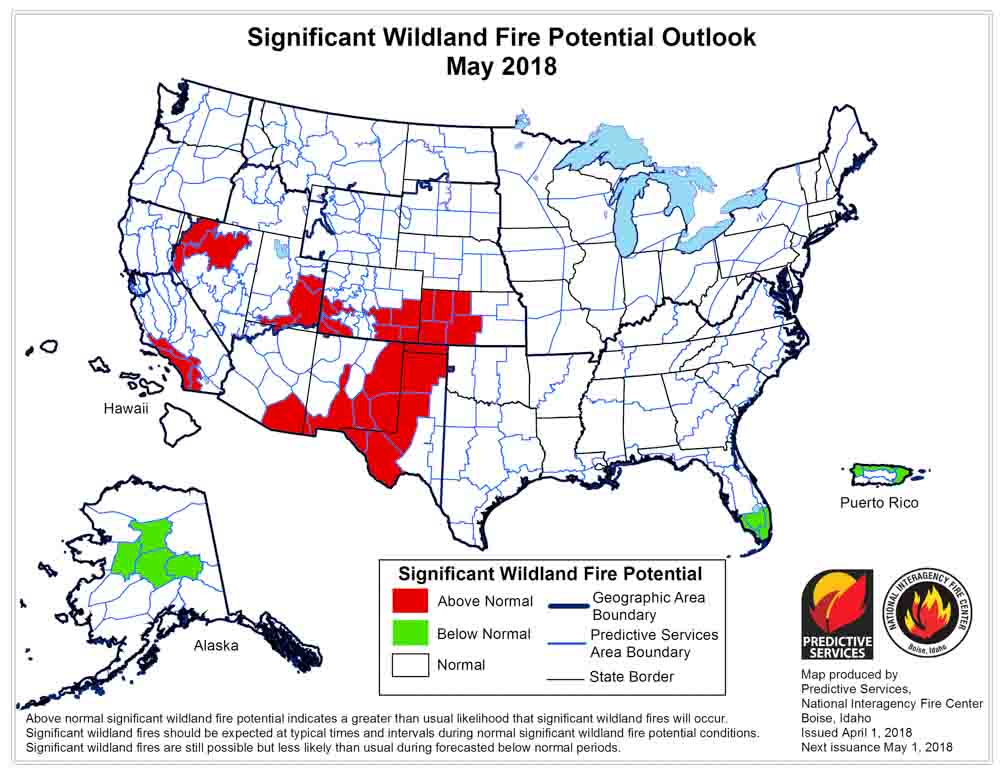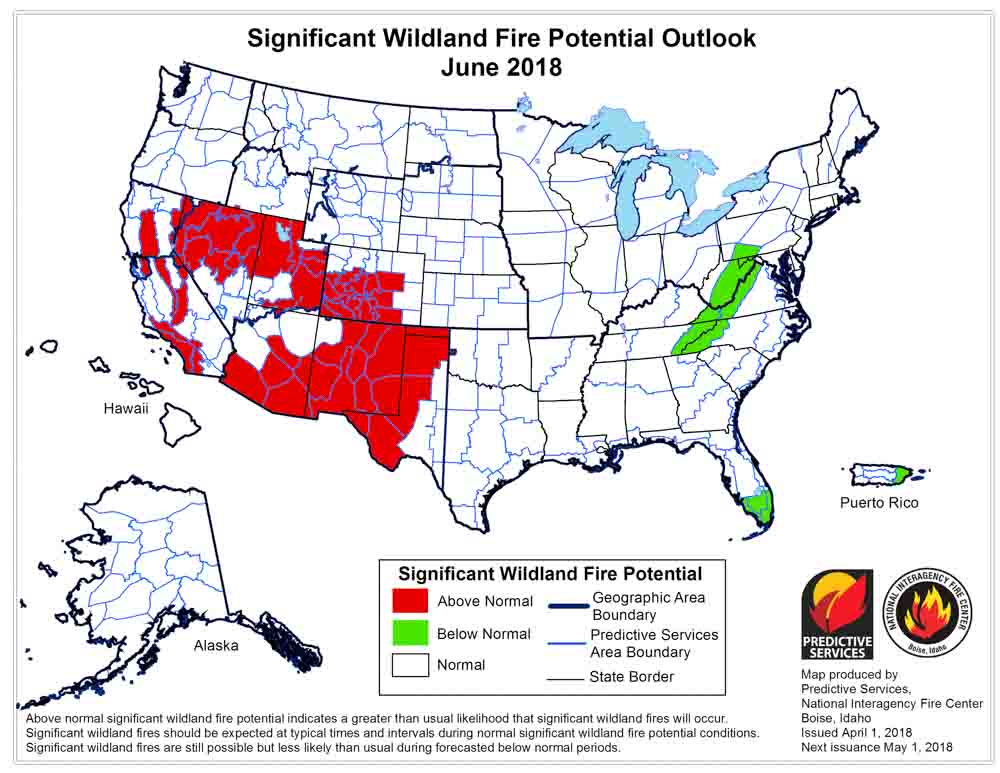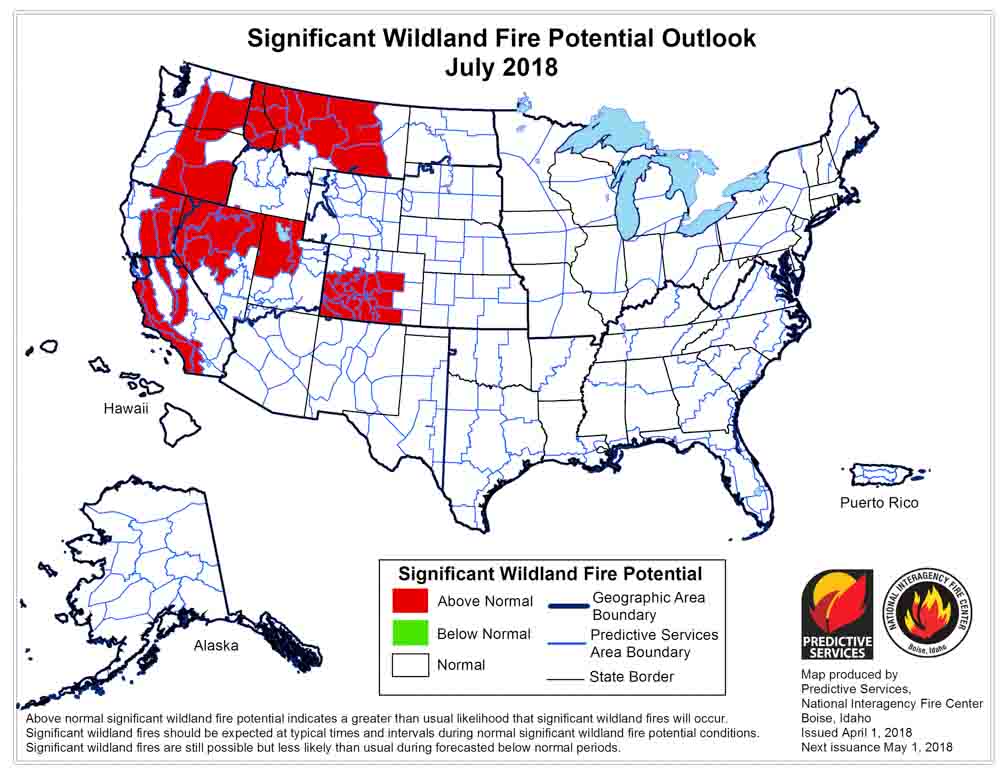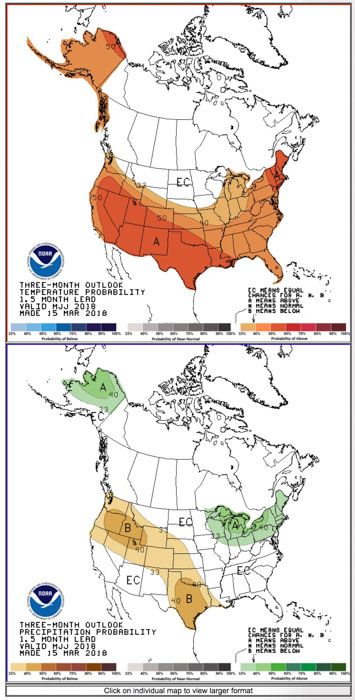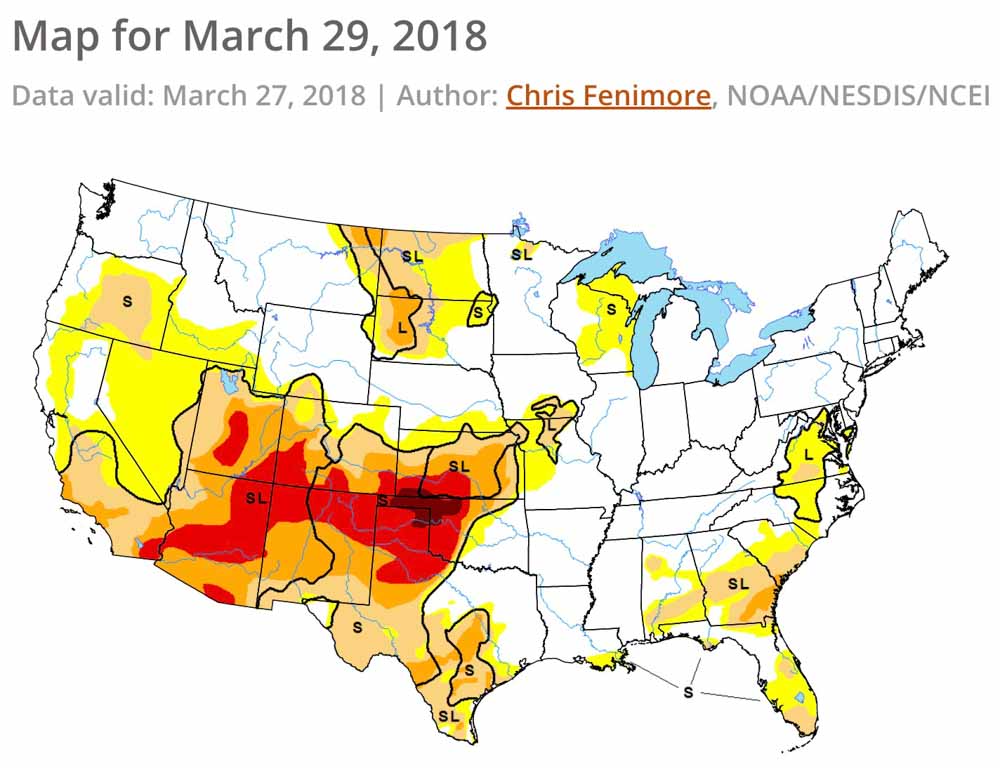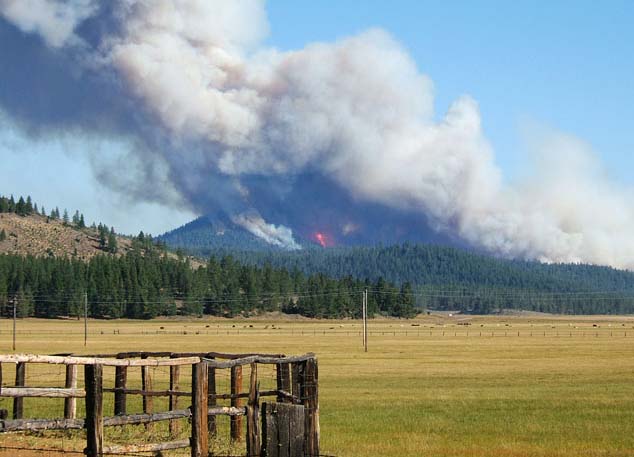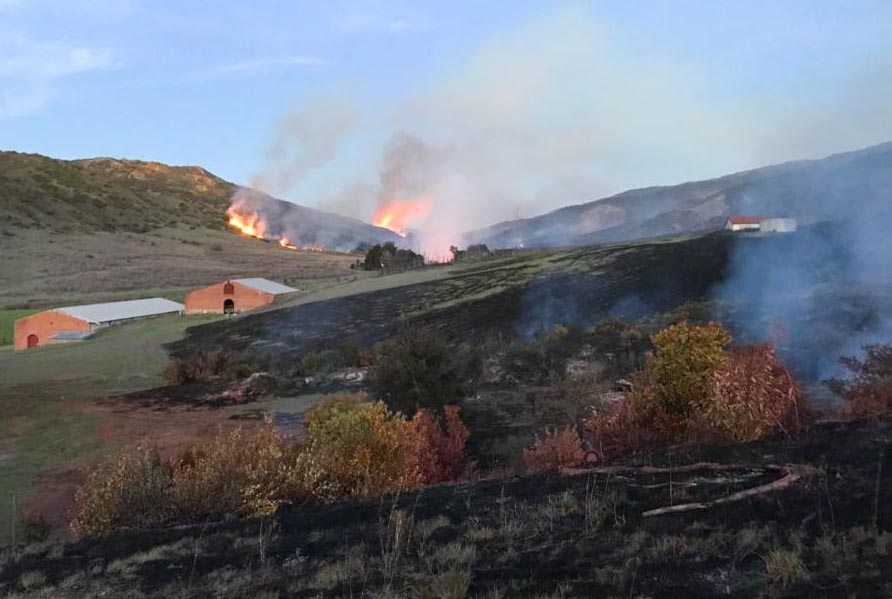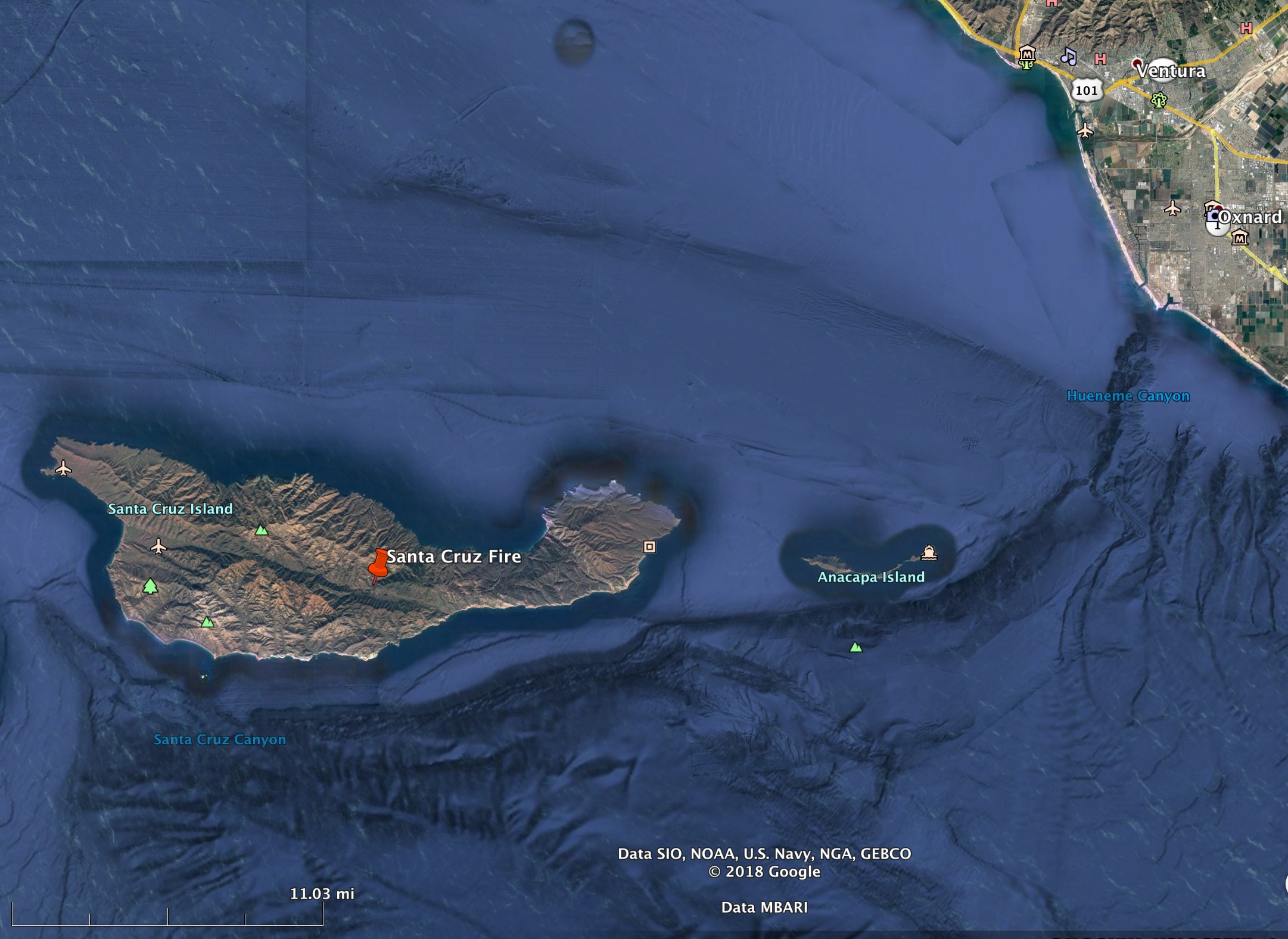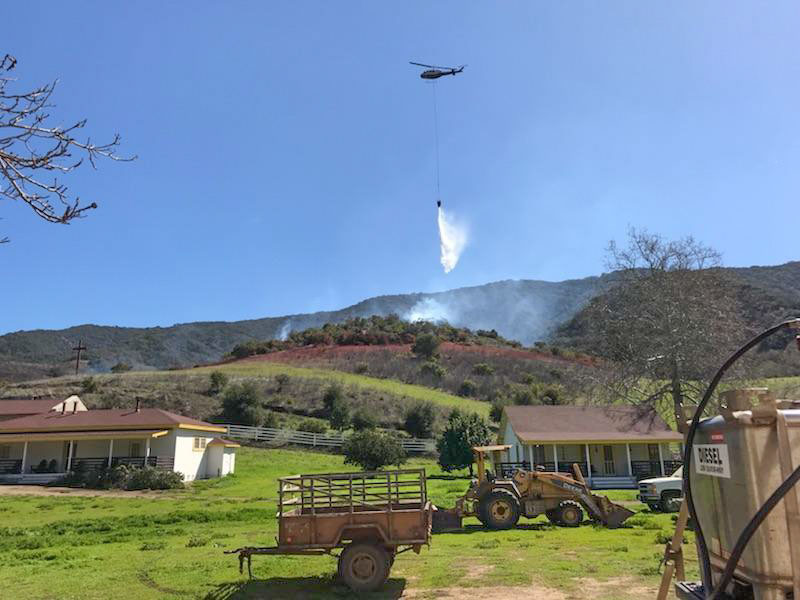Above: Tubbs Fire in Sonoma County, California, October, 2017. Photo by Jeff Zimmerman.
The huge fires that tore through populated areas north of the San Francisco Bay Area last October heavily impacted the region. The Nuns, Pocket, Atlas, and Tubbs Fires in Sonoma and Napa Counties burned over 100,000 acres. At least 44 people were killed and more than 5,000 structures were destroyed after the siege began October 8.
Facts like the above are what you normally hear when the impacts of wildfires and other natural disasters are discussed. But a lot is going on behind the scenes to directly or indirectly mitigate the effects and provide logistical support for the emergency responders.
Three fires burned in Sonoma County — the Pocket, Tubbs, and Nuns Fires. The county is very large — 1,768 square miles with a population of half a million.
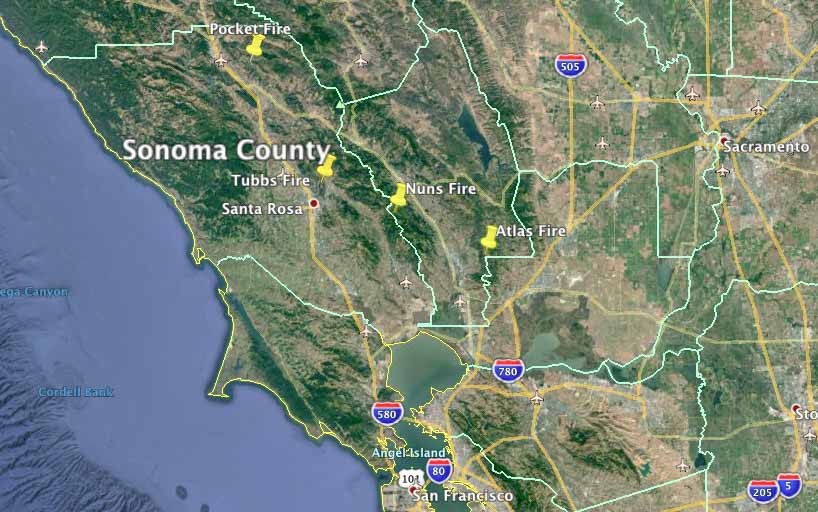
The County-owned vehicles are maintained by fleet manager David Worthington and his 22 colleagues. In an article published at Government Fleet, Mr. Worthington wrote about some of the lessons his organization learned during the fire siege. Many Logistics personnel on Incident Management Teams are familiar with some of these issues, but it is interesting hearing about the perceptions of a fleet manager outside of the wildfire organization.
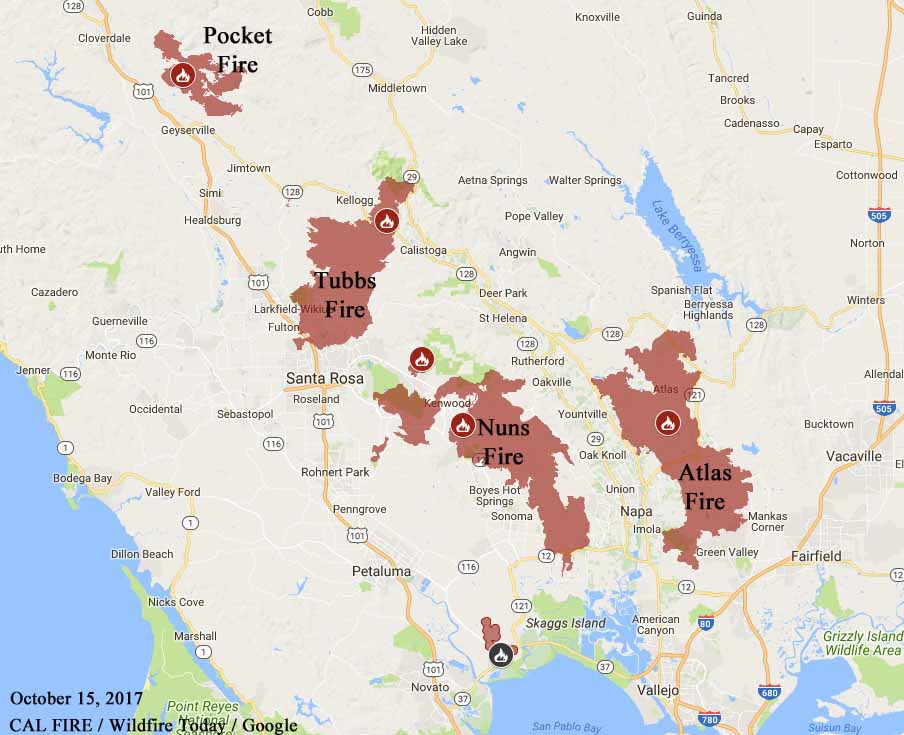
You should read the entire article, but here are some of the topics that were covered in the article.
- Many tires on Deputy Sheriff vehicles had flats caused by driving over debris and then in some cases were destroyed when the officer had to continue driving to get to a safe place to stop.
- Several vehicles suffered significant damage from radiant heat — melted plastic trim, headlights, and damage to the vinyl layer in the window glass.
- With a high demand for fuel, they stopped trying to schedule fuel deliveries, and had the vendors bring a truck every day to top off the storage tanks.
- Replacing the plugged cabin air filters was as important as replacing the engine air filters.
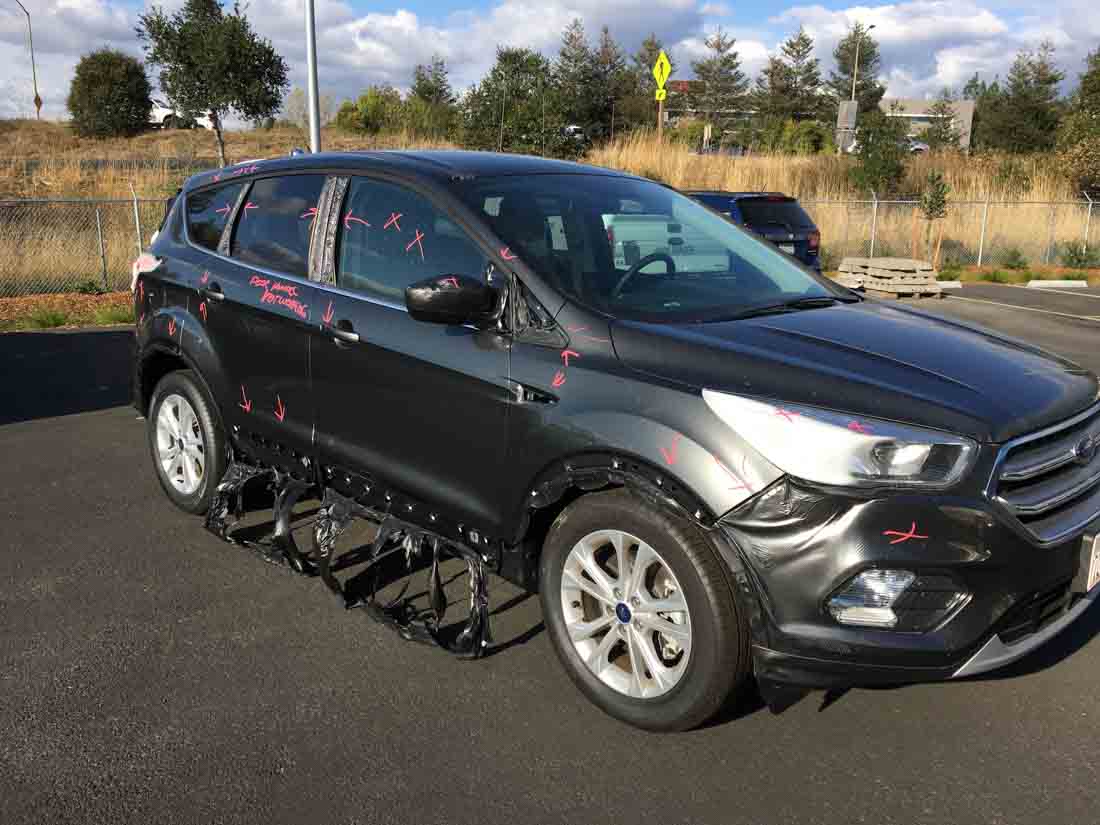

Thanks and a tip of the hat go out to Bob.
Typos or errors, report them HERE.




